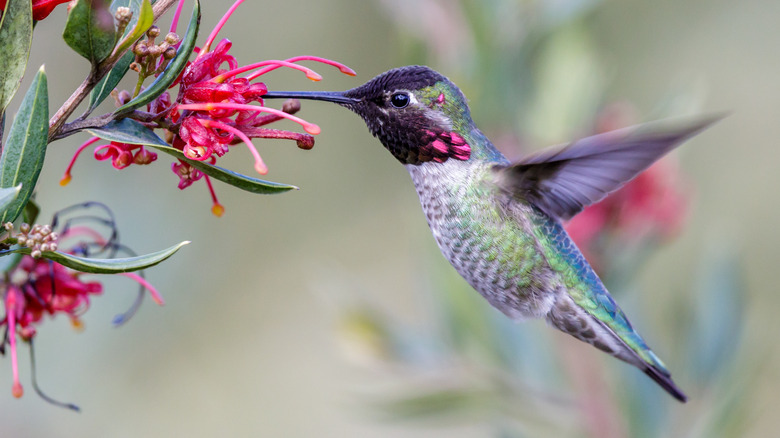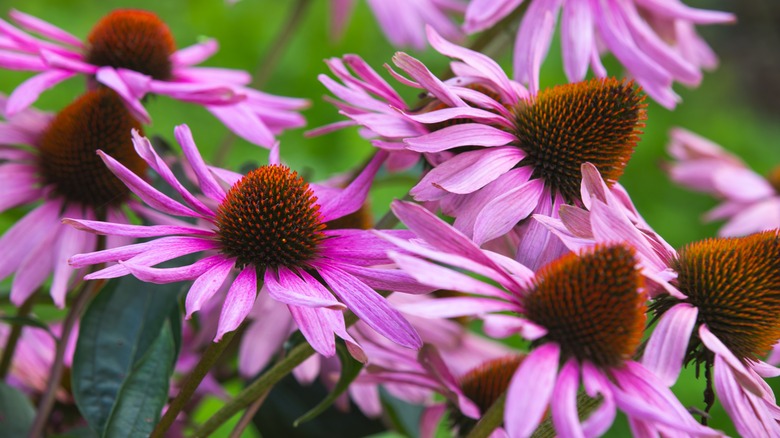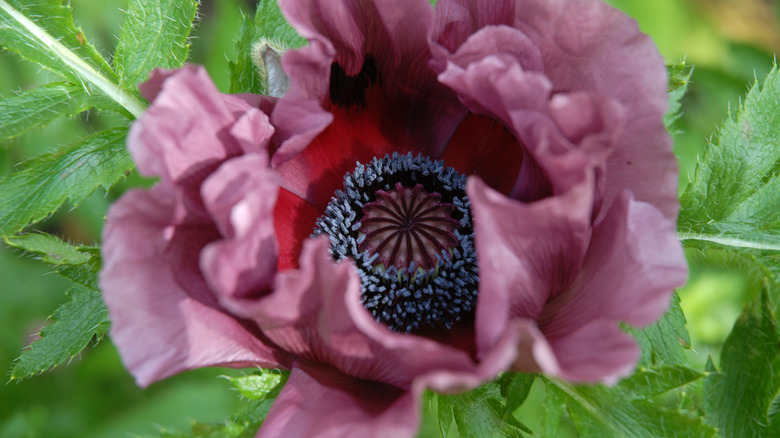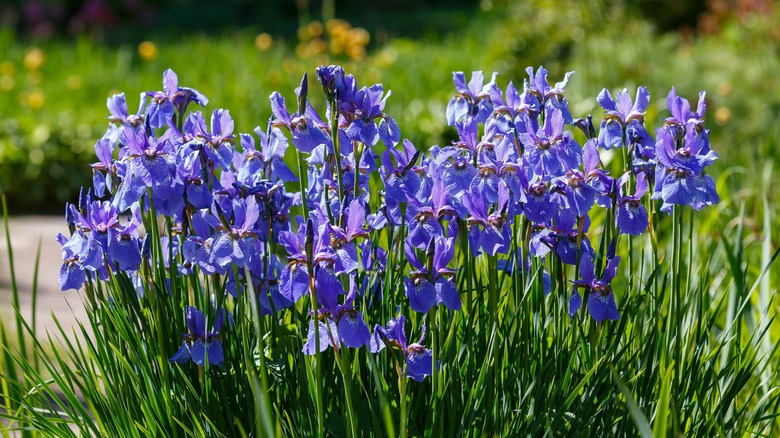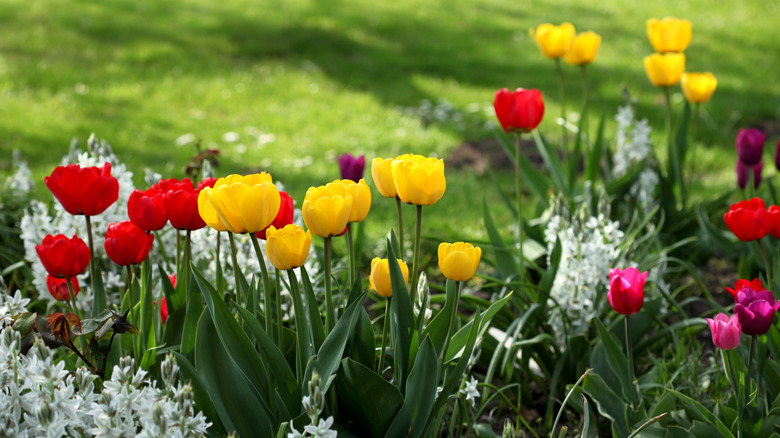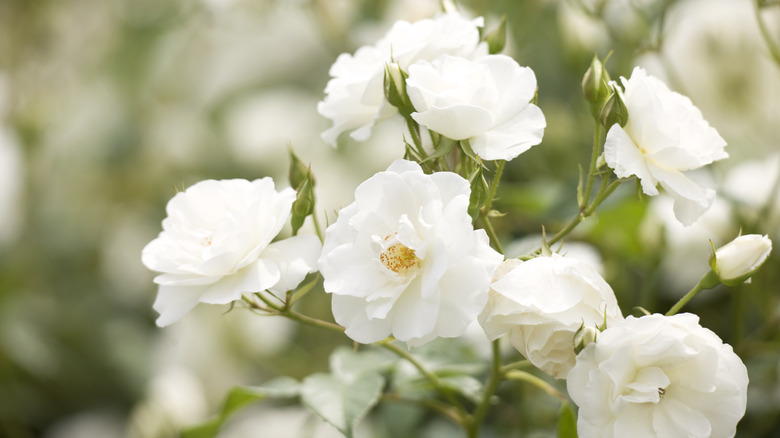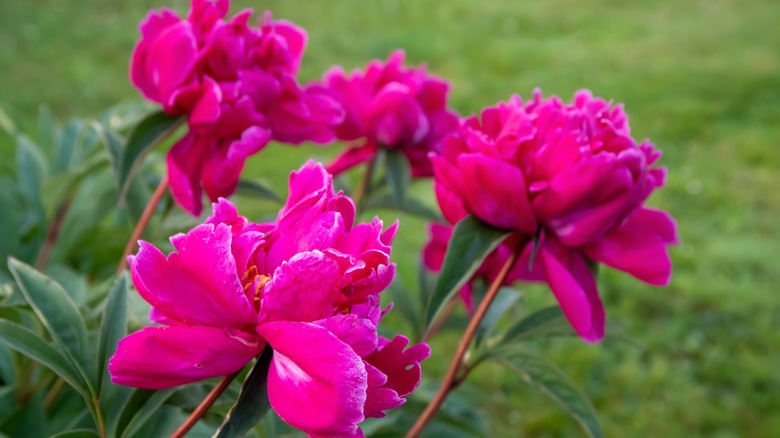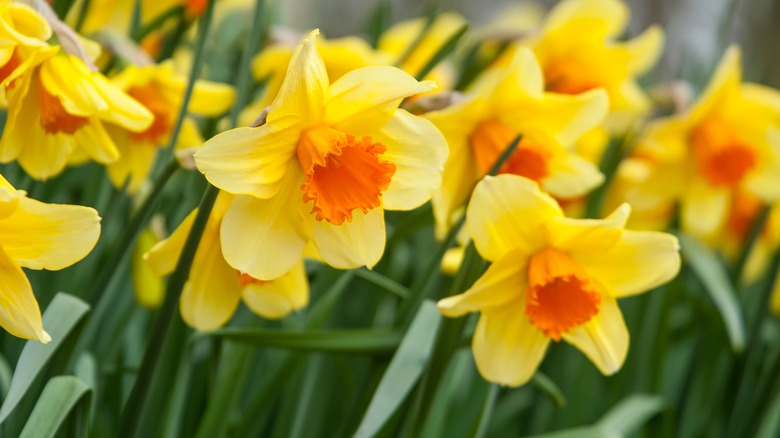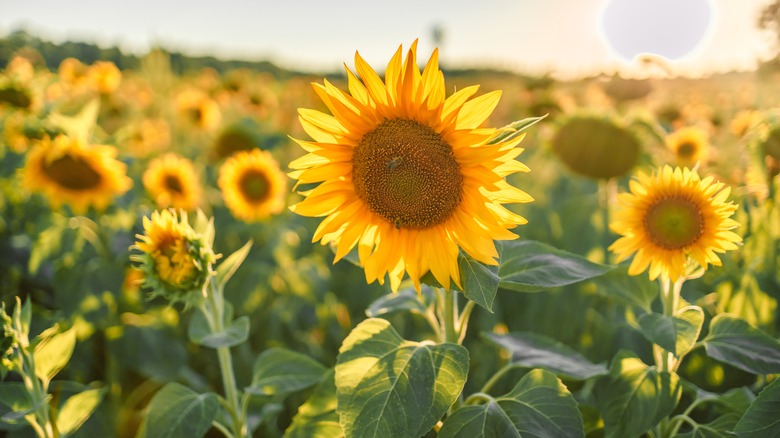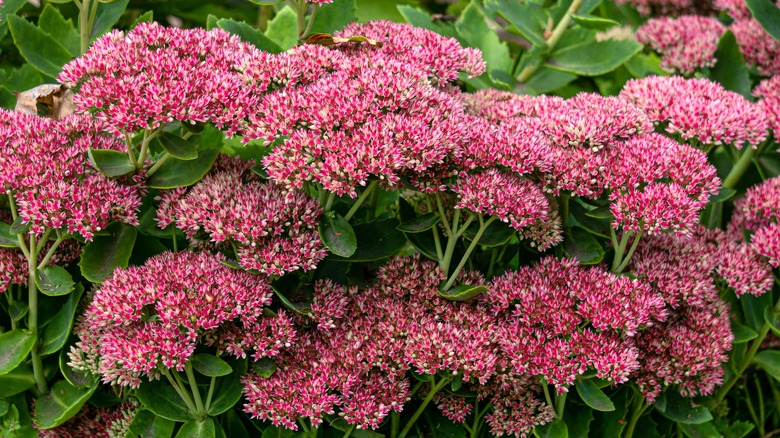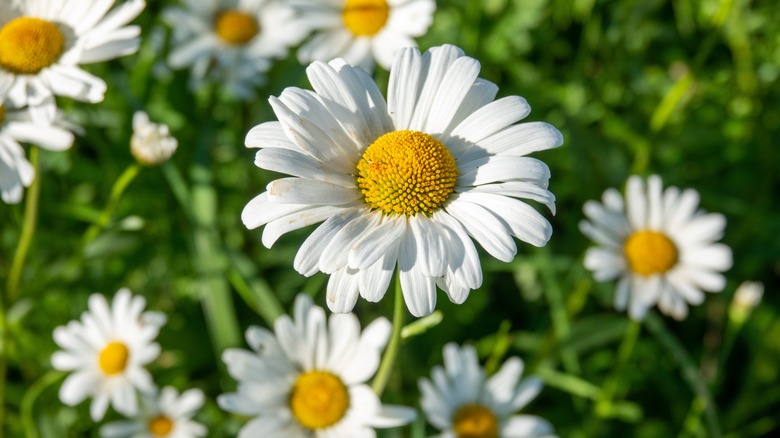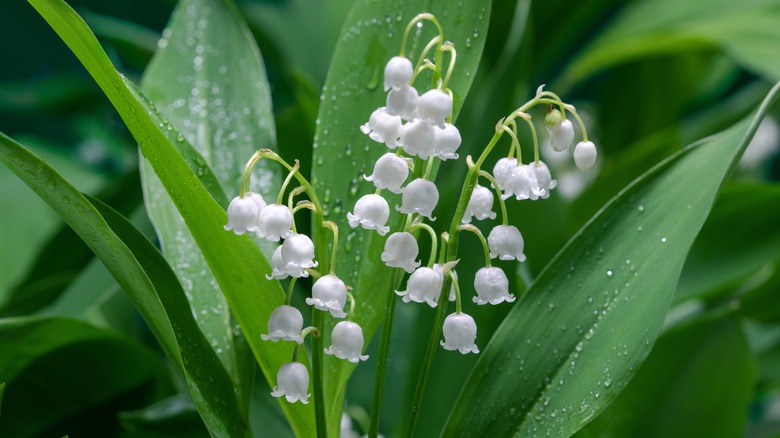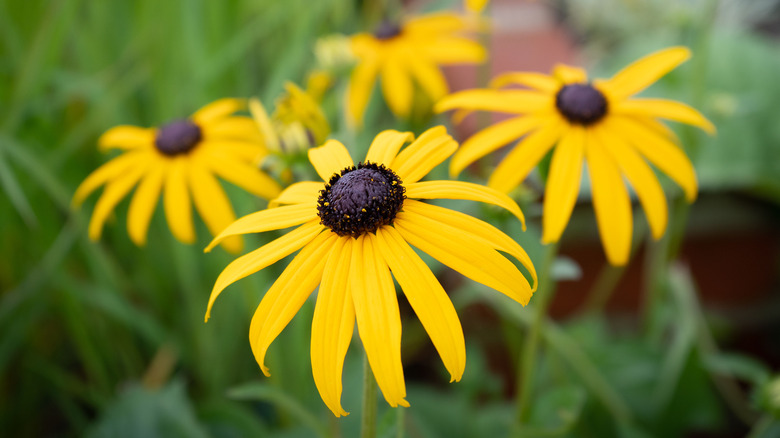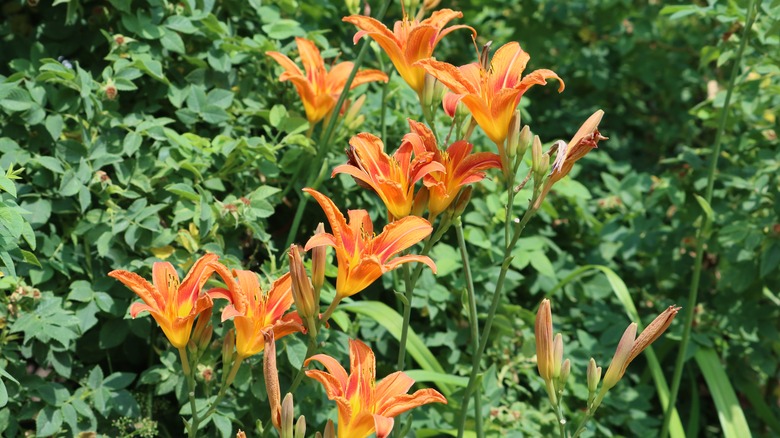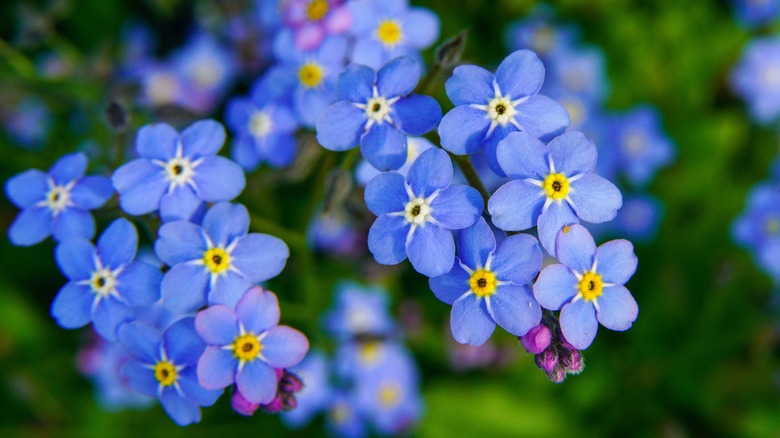Don't Plant These Popular Flowers If You're Trying To Attract Hummingbirds To Your Yard
Hummingbirds are fascinating creatures to watch and also great little pollinators. It's no wonder so many people are interested in attracting more of them into their gardens. If you're wondering why hummingbirds don't visit your yard, it could be because you made the mistake of planting insipid-colored flowers, open blooms, or flowers that don't produce much of the sweet nectar that these feathered friends spend the majority of their lives in search of. To help you discover if you've planted these flowers in your garden, we've listed 14 blooms hummingbirds don't normally enjoy below.
If you want to create a more hummingbird-friendly garden, try planting native flowers that are brightly-colored, tubular in shape, and nectar-rich. Native plants, such as bee balm (Monarda) and trumpet honeysuckle (Lonicera sempervirens), are always going to be far superior when it comes to providing nectar than any exotic types or hybrids. Aside from planting flowers in your garden for hummingbirds to feed from, you can also provide store-bought or DIY feeders. Fill your feeders up with homemade sugar water or buy pre-made varieties. Just don't add honey, dyes, or artificial sweeteners, and position feeders near trees and bushes so the birds feel safe while feeding.
1. Coneflowers (Echinacea)
Coneflowers are perennials, easy to grow, and well-known for attracting many different kinds of pollinators into the garden like birds, bees, and butterflies. However, not everybody is lucky enough to attract hummers with these large, beautiful blooms, as some say they've never seen birds feed from them. Hummingbirds, with their long beaks, seem to prefer longer, more tubular-shaped flowers like the firecracker plant (Russelia equisetiformis) with its many little red blooms. You could also try hummingbird fuchsia (Fuchsia magellanica), which, as the name suggests, is very popular with our little friends.
2. Oriental poppies (Papaver orientale)
Hummingbirds seem to love red flowers in particular, so you may assume that red oriental poppies will lead these birds into your yard. However, some have discovered that hummers don't normally visit this flower, perhaps because they don't have a tubular shape. Instead of taking the risk and planting these in your garden, some other hummingbird-friendly red blooms you can try instead include red hibiscus blooms (Hibiscus rosa-sinensis) or red petunias (Petunioideae).
3. Irises (Iris)
While some believe that irises do, in fact, attract hummingbirds, the opinion is divided, as others claim that they've never seen hummingbirds visit them. Perhaps this is because the muted blueish-purple color can't compete with other more vibrant-colored blooms in the garden. If you've found that these tiny birds don't visit your irises, try planting red flowers instead of blue ones.
4. Tulips (Tulipa)
Although very popular in people's gardens due to their wonderful variety of colors and impressive globular blooms, tulips are not very enticing to hummingbirds. This may be due to the lower levels of nectar they provide in comparison to other flowers that these feathered friends feed from. Even if you only plant red ones, hummingbirds may choose other flowers over your tulips. They are more likely to attract bees with their pollen instead.
5. Roses (Rosa)
Don't bother planting roses in your garden if you want to attract more hummingbirds. They don't have much nectar to offer, which means birds often lose interest in them even if they're red. Further, their openings are too big, making it difficult for hummingbirds to drink from them. Yellow and white roses are not colors hummingbirds will be drawn to either, as they prefer more vibrant colors like red. Go for more vibrantly-colored and tubular blooms instead.
6. Peonies (Paeonia)
We love this pretty flower as part of a beautiful bouquet, but they are not on the menu for our hungry hummingbird friends. The reason hummingbirds probably don't go for peonies is due to the shape of the flower. The center is difficult to get to due to the fluffy arrangement of petals. Hummers are far more likely to conserve their efforts for bell-shaped flowers like woodland pinedrops (Pterospora) that offer plenty of space for their buzzing wings while hovering.
7. Daffodils (Narcissus)
These cheery spring blooms are very popular in gardens but not so popular with hummingbirds. Yellow flowers can be too lackluster to attract hummingbirds, and they typically don't have much nectar in them either, so they're not very useful for hummers. Hummingbirds tend to be more attracted to red-colored flowers, so you could try falling stars (Crocosmia aurea) or Indian pink (Spigelia marilandica) blooms instead.
8. Sunflowers (Helianthus)
There are mixed opinions on whether hummingbirds are attracted to sunflowers. Some say they are among the worst flowers for attracting hummingbirds, perhaps because they are yellow, which is not a color that these feathered creatures naturally gravitate towards. However, others insist that they are a magnet for hummingbirds because they produce so much nectar from the many tube-shaped receptacles in the center of the flower. Because the opinion is split, it may be better to focus your energy on planting other blooms that hummingbirds are sure to love.
9. Stonecrop (Sedum)
The blooms of upright stonecrop are said to be highly-attractive to pollinators like bees, butterflies, and hummingbirds — but not everybody agrees. Some say that, despite having different-colored varieties of sedum in their garden, they've never seen a feathered friend go near them. Because of this, you may want to skip this plant when planting your hummingbird-friendly garden.
10. Shasta daisies (Leucanthemum × superbum)
Although they are very beautiful flowers that bloom throughout the summer, shasta daisies will not attract hummingbirds to your garden. You're more likely to get butterflies instead. This could be because they are white flowers, and hummingbirds search for bright colors like red when looking for the best flowers to feed from. These blooms are also not the preferred shape for hummingbirds as they're not tubular, so avoid planting them in your garden.
11. Lily of the valley (Convallaria majalis)
Despite being bell-shaped, these little white flowers are unpopular with hummingbirds for two reasons. Firstly, the color white is far too insipid a color to get their attention. It doesn't indicate that the flower is filled with nectar. This is unlike red flowers, which tell the hummer that they have lots of nectar inside. Secondly, the flower produces sap instead of nectar, so it's not an ideal choice for them.
12. Black-eyed susans (Rudbeckia hirta)
If you plant black-eyed susans in your garden, they may initially attract some hummingbirds, but they will soon lose interest as these flowers aren't their favorite source of nectar. Some better perennials to grow for hummingbirds include ones with tube-shaped flowers because they contain the most nectar. You may have more luck with cardinal flowers (Lobelia cardinalis) or native honeysuckles (Lonicera caprifolium) instead.
13. Daylilies (Hemerocallis)
Daylilies are supposed to be really popular with hummingbirds due to their bright colors. Hummingbirds rely on vibrant shades when searching for the best flowers because it indicates that the blooms have lots of nectar. However, some say they've never seen a hummer go near their daylilies despite having many in their garden. Instead, you could try canna lilies (Canna indica), which have nectar-rich flowers that are super popular with pollinators.
14. Forget-me-nots (Myosotis)
Although these pretty little blue flowers grow in abundance, forget-me-nots are not the correct shape or color to attract hummingbirds. The nectar is easy to access for other small insects, but the hummingbird's beak is more suited to tube-shaped blooms. These little flowers also grow close to the ground, whereas taller sprays of flowers like foxgloves (Digitalis purpurea) are better suited to allow them space to hover while they feed.
